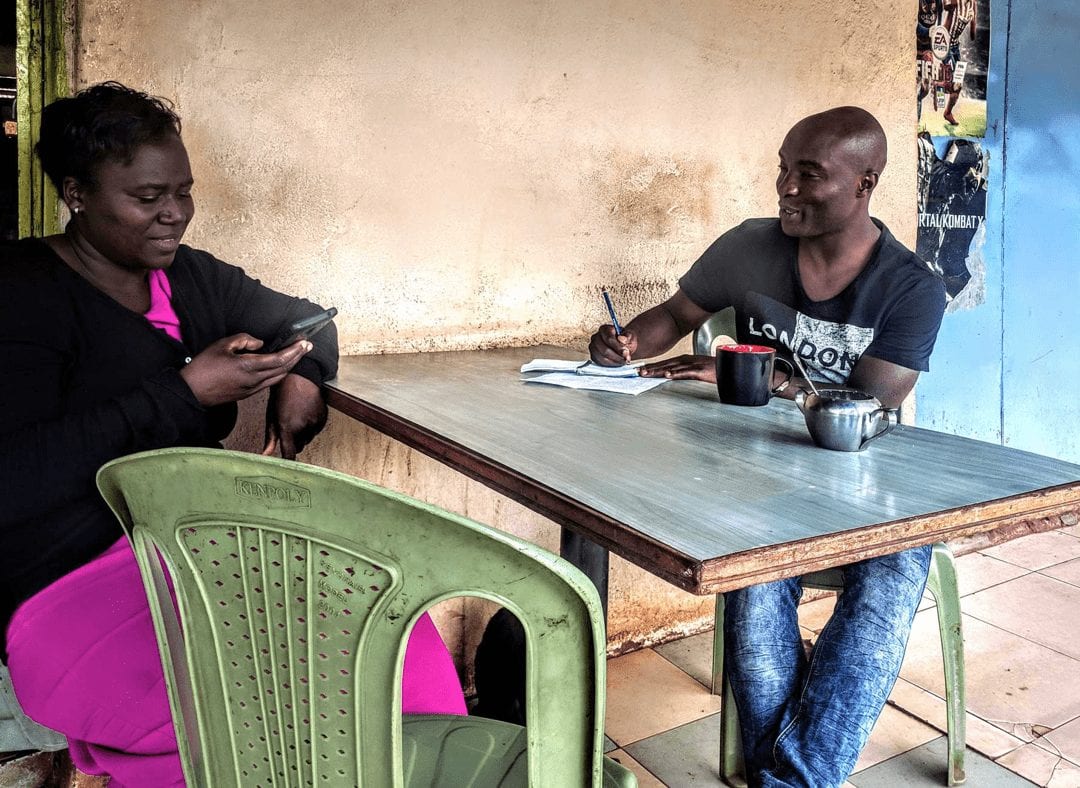
Here at Yoti, we believe in the benefits of a digital identity for all. As we continue to ramp up our efforts in the humanitarian sector, we recently commissioned research to better understand digital identity needs among grassroots nonprofits in the developing world.
In this guest post, Kevin Madegwa – our African research lead – shares his approach and findings from the continent.
Look out for a second guest post on our findings in South East Asia coming soon.
Digital identity in the last mile
Identity research is not something I had thought too much about until I was recently asked to help conduct some design research for Yoti. To tell you the truth, what I have learnt since has been fascinating.
For the unfamiliar, Yoti is a London-based technology company on a mission to become the world’s trusted identity platform. Yoti plans to adapt one of its digital identity products to work in areas with poor infrastructure and limited connectivity where there are critical identity needs. As a human centered designer, I was brought in to help understand the identity needs of grassroots organisations and what these prospective users might need out of an identity tool.
We selected ten countries throughout Africa – Kenya, Uganda, Tanzania, Liberia, Somalia, Zambia Ethiopia, South Sudan, Rwanda and Malawi. These countries are each very different in their adoption and penetration of digital tools, and the application of new technology in general. We were keen to have a wide geographical spread in order to tease out any patterns that might help inform digital identity needs across the spectrum.
Our methods and findings
To get richer data we selected organisations from a range of different sectors, including education, HIV/AIDS and health, water/sanitation, sport and economic development. We also created an online survey to help supplement our data, and to tease out use cases from countries and sectors out of our initial focus areas.
Throughout our user experience research we asked organisations to share their experiences of identification and verification, and their overall thoughts on the concept of digital identity. The responses showed varying degrees of understanding of how digital identity worked, and the different ways it was possible. One interviewee, for example, told us he preferred fingerprints as a mode of identification because everyone has a unique fingerprint, and they were hard to forge. This, of course, is true of any biometric identity method.
We heard stories of infants dying because they were immunised twice. Respondents wondered whether there could be a way of digitally identifying infants as it could save lives. Others spoke of election fraud, and the ability to tell whether an individual had already voted.
On the issue of connectivity, one respondent was adamant that they would only embrace a digital identity platform that didn’t depend on internet connectivity, given how hard it was to access the internet in their community. This is a critical insight given, at times, there is a tendency to design products that do not fit the context of the user. These solutions are doomed to fail, however much they are needed, and Yoti are committed to only providing appropriate tools that work in the environments in which their users operate.
For many rural health clinics and community hospitals, patient records are stored on paper in physical files and binders. If a patient visits a health facility without their book or card, a clinician is forced to go through a pile of paperwork to find their name and any other details they might need before attending to the patient. This eats up a lot of time, represents wasted effort and is a poor use of often limited resources – especially if there is a long queue of patients waiting to be seen. This can lead to frustration from other patients, and sometimes tempers flare up turning into physical violence and verbal abuse. Clinicians we interviewed wondered whether they could digitise the identification and verification process for patients to speed up the service. Some saw a digital identification system not only as a huge problem solver that would save time, but also one that might help secure patient information in case of fire or flooding.
Work to do yet
Many others had more basic questions around digital identity, something which was not a surprise given they had previously had little exposure to the technology. Is a digital identity system secure? Is the system flexible? If it needs to connect to the internet, does it use a lot of data? Do people need smartphones? Can they be hacked? Clearly any work that Yoti does in these environments will require a degree of education, and technological sensitisation.
Yoti plans to release their research findings in due course. If you’re interested in digital identity in the last mile, or you’re a non-profit organisation working in these kinds of challenging places and would like to talk more, they would love to hear from you.
Kevin Madegwa
www.fender.co.ke
Nairobi, Kenya
